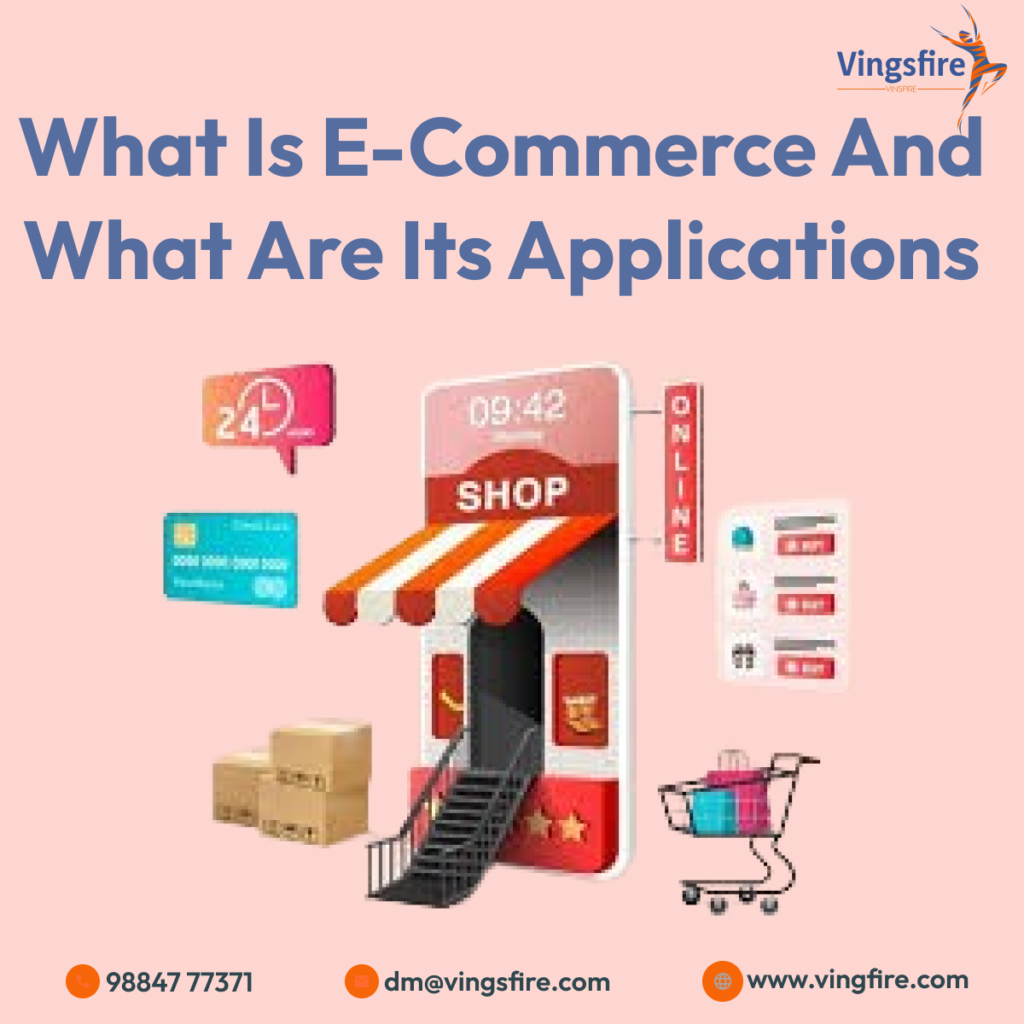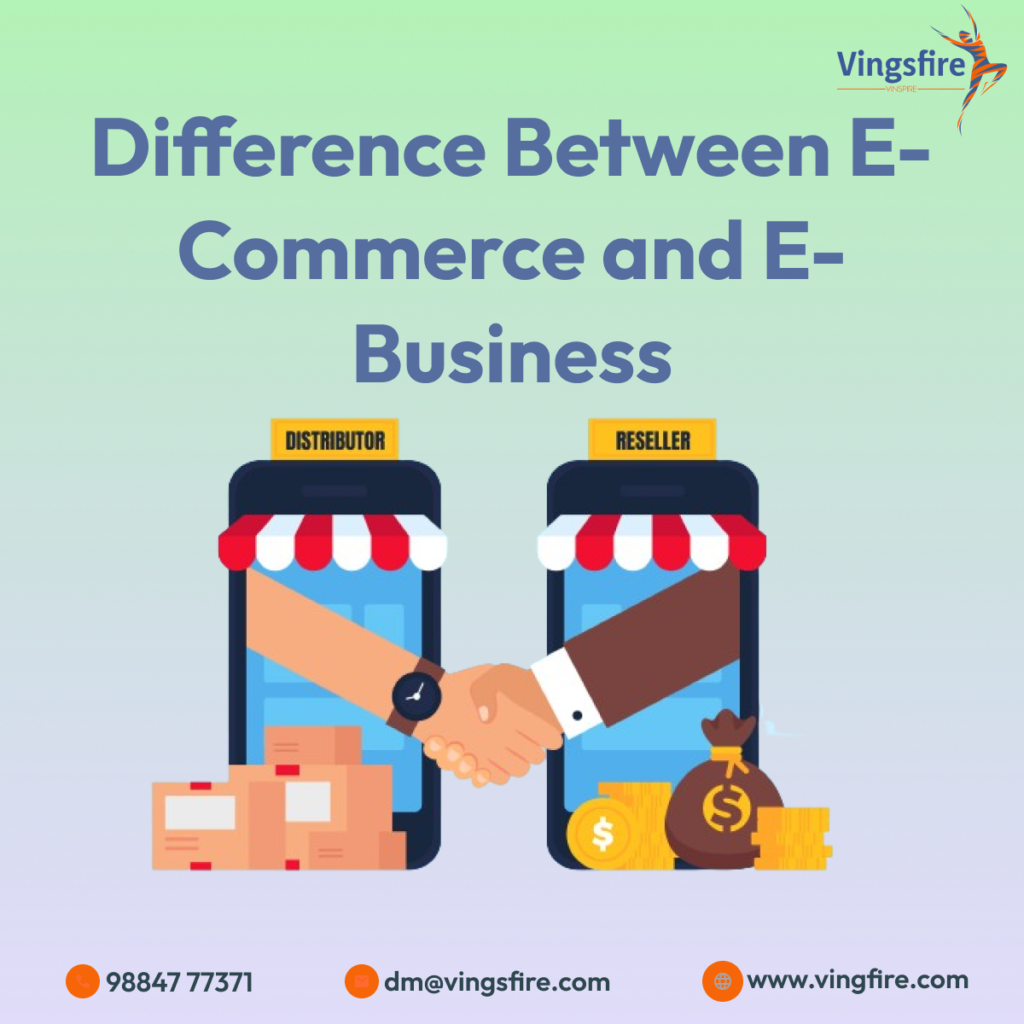Introduction:
Description of e commerce In the rapidly evolving landscape of business and technology, e-commerce stands as a cornerstone, reshaping the way we buy and sell goods and services. This article will delve into the depths of e-commerce, exploring its various facets to provide a comprehensive understanding. From its definition to its impact on the global economy, we’ll unravel the complexities and nuances that make e-commerce an indispensable part of our modern world.
Learn More About Vingsfire:-
1.LINKEDIN
2.FACEBOOK
Defining E-Commerce:
E-commerce, short for electronic commerce, refers to the buying and selling of goods and services over the internet. It encompasses a broad range of activities, from online retail stores and digital marketplaces to electronic payments and online auctions. The fundamental essence of e-commerce lies in the utilization of digital technologies to facilitate commercial transactions.
Evolution of E-Commerce:
The roots of e-commerce can be traced back to the early days of the internet, where the concept of online shopping started gaining traction. Over the years, advancements in technology, secure payment gateways, and the widespread adoption of smartphones have propelled e-commerce into a global phenomenon. From small businesses to multinational corporations, almost every enterprise has embraced the digital marketplace description of e commerce.
Key Components of E-Commerce:
To truly understand the best description of e-commerce, one must grasp its key components:
Online Retail Stores: These are digital platforms where businesses showcase and sell their products or services. Examples include Amazon, eBay, and Shopify.
Digital Marketplaces: Platforms that connect buyers and sellers, providing a space for various businesses to showcase their offerings. Examples include Etsy, Alibaba, and eBay.
Electronic Payments: Secure online payment systems that enable customers to make transactions seamlessly. Popular examples include PayPal, Stripe, and Square.
Mobile Commerce (M-Commerce): The use of mobile devices for online shopping, expanding the reach of e-commerce beyond traditional computers.
Supply Chain and Logistics: Efficient systems for order fulfillment, shipping, and delivery, ensuring products reach customers in a timely manner.
Impact on the Global Economy:
E-commerce has not only transformed the way businesses operate but has also significantly impacted the global economy. Its influence extends to various sectors, creating new opportunities and challenges. The key impacts include:
Market Accessibility: E-commerce breaks down geographical barriers, allowing businesses to reach a global audience.
Job Creation: The growth of e-commerce has led to the creation of new job opportunities in areas such as digital marketing, logistics, and customer service.
Consumer Convenience: Online shopping provides consumers with the convenience of browsing and purchasing products from the comfort of their homes.
Market Dynamics: E-commerce has altered traditional market dynamics, with online retailers challenging brick-and-mortar establishments.
Technological Advancements: The constant evolution of e-commerce drives technological advancements, fostering innovation in areas such as artificial intelligence, augmented reality, and blockchain.
Challenges and Opportunities:
While e-commerce offers numerous advantages, it also presents challenges that businesses must navigate. Some of these include:
Security Concerns: The need for robust cybersecurity measures to protect sensitive customer information.
Competition: The digital marketplace is highly competitive, requiring businesses to differentiate themselves to stand out.
Logistical Challenges: Efficient supply chain management and timely delivery pose ongoing challenges, especially for businesses dealing with physical products.
Regulatory Compliance: Adhering to diverse international regulations and standards is crucial for global e-commerce operations.
Conclusion:
In conclusion, description of e commerce is a dynamic and transformative force that has revolutionized the way we conduct business. From its humble beginnings to its current status as a global economic powerhouse, e-commerce continues to shape the future of commerce. Understanding its intricacies, challenges, and opportunities is essential for businesses and consumers alike as we navigate the ever-evolving landscape of digital transactions. Embracing the potential of e-commerce opens doors to a world of possibilities, driving innovation and reshaping the way we connect, buy, and sell in the digital age description of e commerce.













